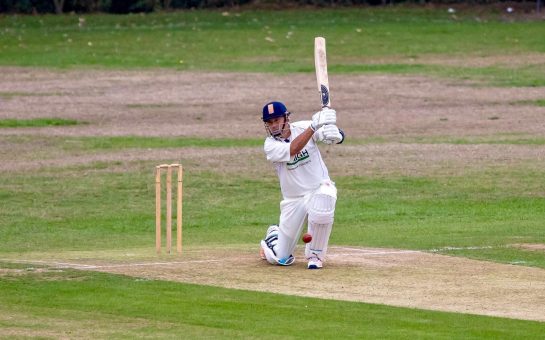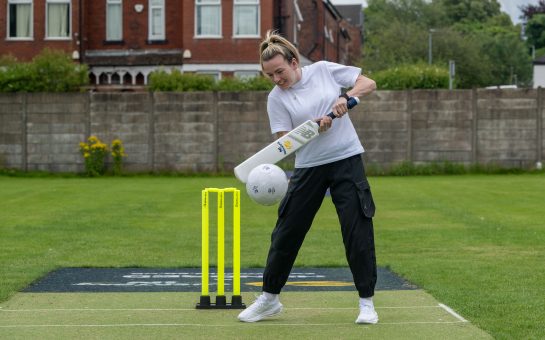PJ Hughes, retired hurt, 63. Cricket scorecards rarely tell the whole story.
When Sean Abbott’s bouncer caught out Phil Hughes by striking him on the back of the head, for a split second the bowler must have thought ‘that’s a good ball.’
Hughes’ weakness was the short ball and he had worked tirelessly to overcome his struggles, so when a second later he doubled to gather himself, there was concern from fielders and bowler as there often is.
Had Hughes stood upright soon afterwards, a few wisecracks and tap on the bum might have followed. ‘Chin up, mate. Better hit the next one.’
Cricket, after all, has earned a reputation for breeding some of the most hardened sportsmen on the planet. Prima donna footballers, who collapse in a heap when the wind is blowing too hard, need not apply.
However when Hughes fell face first to the ground, mild concern turned to pure horror.
Jim Maxwell, one of the great voices of Australian cricket, had the words stick in his throat on radio station 702 ABC Sydney when he broke the news to the public.
While his first thoughts were for Hughes’ family, his sympathy for Abbott and all those involved in the game was clear.
“Some of that New South Wales team were still sitting in the dressing room up until midnight,” said Maxwell. “A day later they came back for a counselling session, but it’s just horrendous news.
“We know it’s a dangerous game. Missiles are flying around. People duck and weave, and they get hit from time to time.”
Maxwell’s words acknowledge that when stepping onto a cricket pitch, like rugby, football, or any other sport, you enter into an arena where you are vulnerable.
It is that vulnerability which draws us to sport, especially cricket. It is a game of attrition, where sides are worn down not over a day but over five days, or even over months of a series. Every weakness is exploited, and every possible avenue of your game and mind explored.
“You had to admire his spirit. He was resilient and persevering,” said Maxwell.
Resilient hardly covers it. He came into the side aged 19 and made a duck on debut at the beginning of a tough series in South Africa.
Australia have made a habit of blooding young batsmen lower down the order, with tremendous success.
But Hughes, precocious and headstrong, was thrown in at the top, and nicked the fourth ball of the series to Mark Boucher.
Despite that early failure, he showed no remorse, and continued to play his own way, compiling 415 runs in his next five innings in a series win that captain and Hughes’ mentor Ricky Ponting called his favourite.
Spells in and out of the team and Hughes was tested again and again, but he never went away. He continued to make runs in domestic and in international cricket when given the opportunity, and was even learning to master the short ball.
However it was still a weakness that sides would plan to exploit. In a team meeting before New South Wales’ clash with South Australia, Abbott would have been reminded that their plan was to pepper Hughes with short balls with a full wide delivery as a change-up.
Abbott, a promising young bowler caps at international level already, executed the plan almost perfectly: the ideal bouncer is closer to the armpit.
Whether Abbott will ever be the same cricketer or even man remains to be seen. What is for sure is that he will never forget his tenth over of that match, which will forever be three balls shorter than it should have been. Jim Maxwell’s words from a day later may well ring in his ears.
“We know it’s a dangerous game.”
Adelaide Oval pays tribute to Phillip Hughes. pic.twitter.com/puVtVT1vsC
— telegraph_sport (@telegraph_sport) November 27, 2014
Nice tribute from the @dailytelegraph to Phil Hughes, this is the back page for tomorrow’s paper pic.twitter.com/lRG1tqqYB1
— Neal Mann (@fieldproducer) November 27, 2014
Main image courtesy of PJ R via Flickr, with thanks.



